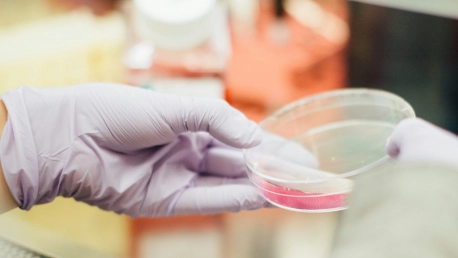Certainly! Here’s the formatted content with headings:Artificial tissue engineering is at the thrilling intersection of robotics and biomedical science, promising to revolutionize healthcare. This field utilizes robotic precision and cellular knowledge to address health issues and organ shortages. It offers the potential to advance personalized medicine, augment the capabilities of medical prosthetics, and provide more effective medical implants. This burgeoning area of study has the potential to replace the need for organ donors, representing a significant breakthrough for patients with severe medical conditions. The field is not without its challenges, however, as it requires the brightest minds to navigate complex scientific hurdles. The success of artificial tissue engineering could lead to significant milestones in the way we approach treatment and patient care in the future.
The Synergy of Robotics and Biomedical Engineering
Robotics serves as the backbone for the accurate and delicate assembly of biological materials in tissue engineering. Robotic arms, programmed to perform complex tasks with precision that mimics the fine movements of a skilled artisan, are indispensable in the realm of tissue construct creation. The capacity of these machines to conduct repetitive tasks without fatigue is critical to generating tissue that is consistent and reliable in structure and function. Equally important is the contribution of biomedical engineering, which supplies the building blocks—scaffolds that offer structure, biomaterials that support cellular engagement, and growth factors that guide tissue development. This scientific duo propels us forward, stretching the limits of our capability to repair the human body and creating a future where regenerative therapies become commonplace.
Overcoming Complex Tissue Structures with Advanced Technologies
One of the steepest climbs in artificial tissue engineering is the replication of the human body’s complex tissue architecture. Enter 3D bioprinting—a revolutionary technology that meticulously layers cells and biomaterials to fabricate tissue structures with astonishing detail. This method represents the pinnacle of precision and customization, allowing for the development of constructs that not just resemble but also function like their natural counterparts.Beyond bioprinting, robotics extends its reach, skillfully arranging tissues using sensors and tools that imbue the constructs with lifelike organization. This is where cutting-edge innovations such as microfluidic systems come into play, creating channels within the tissue that could one day support the formation of a vascular system—akin to giving a lifeline to engineered tissues.
Broadening Applications: From Organ Replacement to Customized Medicine
The successful creation of artificial tissues could end the plight of patients languishing on organ transplant waiting lists by providing a consistent and compatible source of replacement organs. Such advancements hold the promise of life where death or a diminished quality of life loomed. But the benefits do not halt at transplantation; they also herald an era of personalized medicine, wherein therapies and drugs are tailored to the individual, molded from their own biological canvas for precision treatment.Moreover, artificial tissue engineering can revolutionize the approach to drug development and disease modeling, offering a more accurate human model for testing, sidestepping ethical concerns surrounding animal testing, and increasing the relevance of findings to human health outcomes.
Prosthetics and Implants: Blending with the Human Body
Advancements in artificial tissue engineering are poised to revolutionize prosthetics and medical implants. Artificial limbs and organs could soon not just resemble but also move and feel akin to their natural counterparts, significantly enhancing the quality of life for users and integrating effortlessly with the body’s own movements. This integration of engineered tissues could transform the experience of living with prosthetic or implantable devices.As we edge closer to seamlessly blending artificial constructs with the biological intricacies of the human frame, we are looking at a future where the line between engineered and natural is virtually indistinguishable. Engineered tissues promise a future where prosthetics and implants are not foreign bodies, but extensions of the human form, expertly mimicking the complexities of human tissues. This fusion promises to elevate the human experience, enhancing both form and function in medicine’s next leap forward.
Addressing the Challenges Ahead: Vascularization and Integration
Crafting artificial tissues comes with its own set of trials. A crucial step for their functionality is the formation of vascular networks essential for blood circulation. Innovative scaffolds and microfluidic devices are being developed to support this complex vascularization, a vital component for the tissues’ survival. Without a robust blood vessel system, the promise of bioengineered tissues falls short.Furthermore, the successful integration of these tissues within the human body is paramount. Researchers are dedicated to enhancing the compatibility of these tissues to prevent rejection and to ensure they merge seamlessly with the body’s existing systems. This intersection of biology and engineering is where future medical breakthroughs lie, with the goal to make the term ‘rejection’ obsolete and to advance the harmonious integration of artificial with natural.









